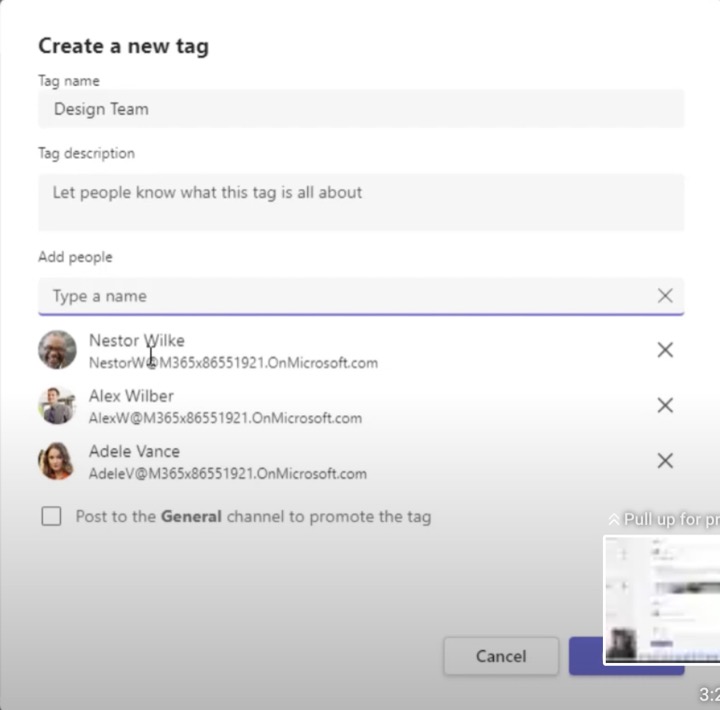Effective Communication Segmentation in Microsoft Teams
Supercharge your efficiency in Microsoft Teams with effective segmentation and tagging strategies, tailored for perfect internal communication.
The video by "Daniel Anderson [MVP]" explores the untapped potential of segmenting communication in a commonly used tool known as Microsoft 'Work Groups'. He suggests that by properly harnessing the power of segmentation, internal communication can become highly efficient and clear. Traditionally, homogeneous communication strategies have been implemented across projects, leading to inefficiency and confusion. However, with the 'Work Groups' tool, segmenting communication could become the norm in many businesses.
Anderson highlights the use of Tags within 'Work Groups'. These are akin to having a group of people in a folder, organized by their roles, projects, or shifts. These tags simplify the process of connecting with your team, by easily creating subgroups that range from superiors to core project members. Interestingly, 'Work Groups' is planning to introduce tags for different shift times, allowing even more precise segmentation.

While explaining how to use a tag, Anderson proves their flexibility and efficiency. For instance, by simply typing @ followed by a tag name, users can send messages to a specific group. Furthermore, managing these tags is made easy with options to add up to 100 names, delete unnecessary tags, and more.
Segmenting Communication
In an era where efficient communication is key, segmenting has the potential to revolutionize the way teams interact. We often overlook the benefits a segmented communication approach could bring to our lives. It ensures that the right messages reach the people they intend, at the right time. Advancements in technology have made this feasible, and tools such as 'Work Groups' are leading the charge in this regard. Harnessing the power of Tags, users can effectively segment their communication, fostering efficiency, clarity and ultimately leading to a smoother workflow. Segmenting thus marks a clear shift from the "one-size-fits-all" approach to a targeted and strategic communication strategy.
For more information, please visit Microsoft 'Work Groups'

Learn about The Power of Segmenting your communication in Microsoft Teams
Understanding the significance and implementing segmentation in your communication efforts using Microsoft's software, currently termed Teams, is highly underrated. It holds immense possibilities and proves to be beneficial. This mode of divvying up communication is seldom discussed while addressing internal correspondence channels for Teams. Seeing its advantages, one might wonder why.
Consider for instance , the dynamics of a project team. They usually do not find the 'one-for-all' style of discussion beneficial. The solution lies in communication segmentation. This step ensures messages land in the rightful hands at the most opportune time, thereby facilitating transparency and productivity. Surely, these are the hallmarks of a good outcome?
Teams' real magic lies in its 'tags' feature which can be likened to a people directory. Every individual is sorted into specific folders, categorized based on roles, projects, or shifts. These tags assist in proper organization, making it easier for you to locate the people. Once generated, the tags act as a bridge connecting you to your team, or individuals within it, using the '@mention' feature. Teams' specialized tag feature for various shifts is also worth looking out for.
- Choose 'Manage tags' from the menu by clicking the 3 dot icon against any of your team's channels.
- Click 'Create tag' to start the process.
- Assign a unique name for the tag and confirm.
- Begin typing in the search box to find a team member you wish to add.
- Select the preferred name and add it.
- Follow this through till you add up to 100 names to a tag.
- Conclude the process by clicking 'Create tag'.
To use a tag, begin by typing '@' followed by the tag name in the message box. Choose the correct tag from the drop-down list of suggested tags. Add the message you intend to relay to this specific group. Managing tags and their members (adding or deleting) can also be done by following similar steps as explained above, under 'Manage tags.'
Get in-depth evaluation, useful tips, amazing bargains, and the latest news cases delivered to your inbox directly, and stay updated with Teams, and it's advanced features. Remember, the main aim is to ensure we are heard correctly and by the right set of people. Achieve this with Teams and unlock a new level of communication efficiency.
More links on about The Power of Segmenting your communication in Microsoft Teams
- Microsoft Teams increases collaboration in the modern ...
- Sep 15, 2023 — Collaborate with your team. Use Microsoft Teams to communicate using chat, video, screen sharing, and to coauthor files within a team. Use ...
- Associate information segments with SharePoint sites
- When a segmented user creates a site, the site automatically gets associated with the user's segment and site's information barriers mode is set as Explicit.
- Information barriers in Microsoft Teams
- Sep 14, 2023 — A team must be prevented from communicating or sharing data with a specific other team. A team must not communicate or share data with anyone ...
Keywords
Microsoft Teams, Segmenting Communication, Power of Segmenting, Microsoft Communication, Teams Communication, Microsoft Teams Segmentation, Segmenting Teams, Teams Communication Power, Segmentation Power, Microsoft Teams Strategy
